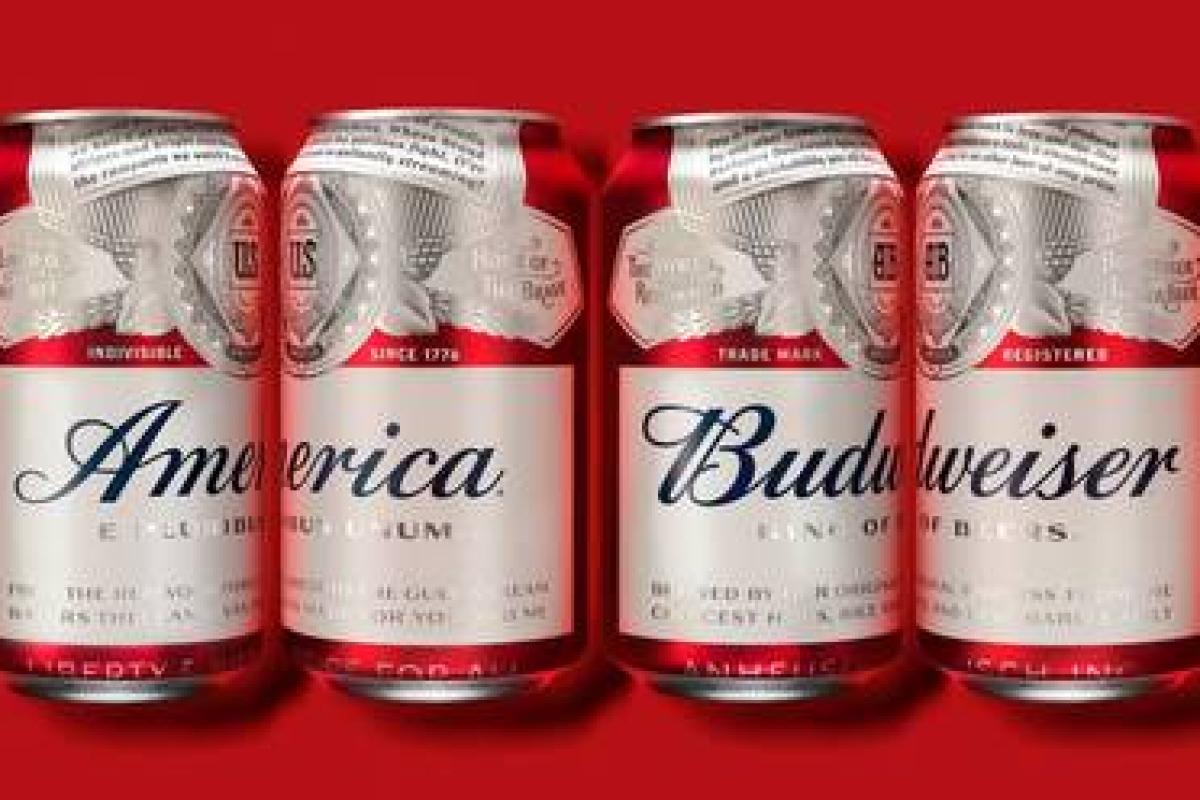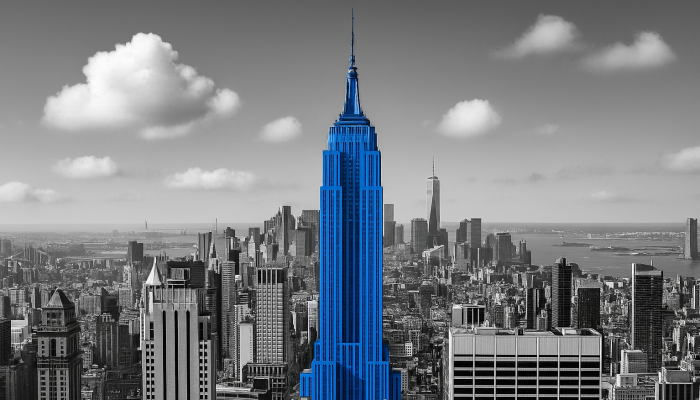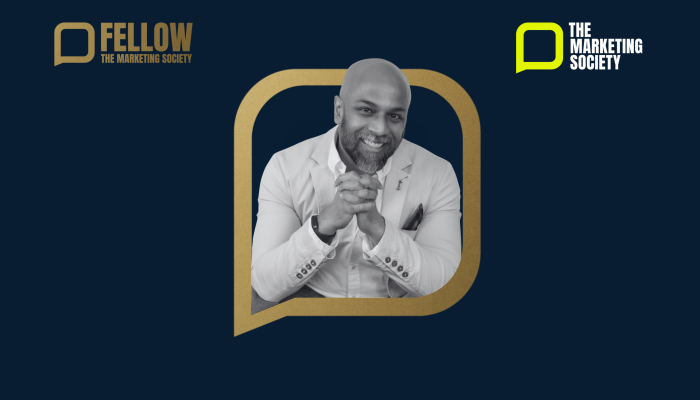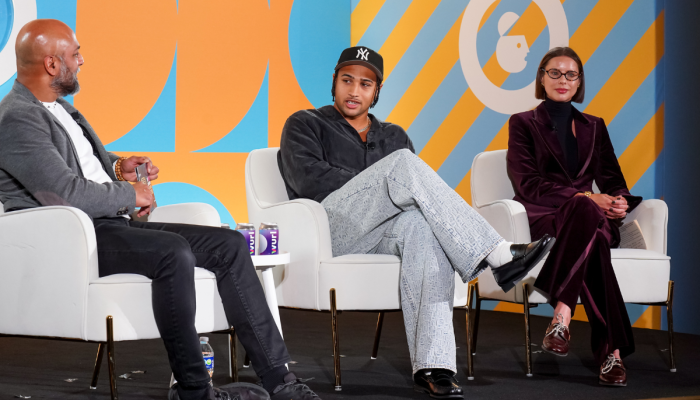“Donald Trump was a master at branding in his business career, but he seems to have left those skills in New York. In just a month in Washington, the president has significantly damaged the American brand abroad…”
Mark P. Lagon and Brian P. McKeon, Foreign Policy, March 1, 2017
Last year’s presidential election raised profound questions about America and its relationship with the wider world.
How is America now perceived abroad? What about American brands? With talk of travel bans, building walls, and “America first,” is the United States still open for business? And what relationship will American brands have with the current administration? What’s to be gained or lost by working with the president, or by challenging him?
Today during Advertising Week, J. Walter Thompson CEO Tamara Ingram unveils new global research from JWT Innovation Group in conversation with industry experts on how to future-proof Brand America.
Changing attitudes
In spring 2017, the Pew Research Center carried out its annual Global Attitudes survey in 37 countries. A median of 22% of respondents said they have confidence in the current administration to do the right thing in world affairs. The percentage expressing confidence in Barack Obama’s administration during the final years of his presidency was 64%.
Charles Aaron Lawry, assistant professor of marketing at the University of Puget Sound, says this lack of confidence is not good for consumer spending, at home or abroad. Pointing to recent terror attacks in London and Paris, he says, “I think that a hunter-gatherer mentality takes hold when you feel fear. You cling to the things that matter to you, including your money.”

Election-themed wax heads at Madame Tussaud's.
Is America still a destination?
Figures released in September 2017 by the United States Department of Commerce show a drop in international visitors to the United States of almost 700,000 people in the first three months of the year, compared to 2016. The 4.2% fall represents a loss of nearly $2.7 billion in spending, according to Tourism Economics, the travel analysis branch of Oxford Economics.
Whether this is a blip or a longer-term trend remains to be seen. British travel journalist Simon Calder remains upbeat over travel to the United States. “It is difficult to detect any pause in the continuing remorseless growth in travel to the US, mostly fuelled by European low-cost airlines such as Norwegian, Eurowings and Icelandair. There is also substantial growth from Asia, in particular China and Australasia,” says Calder.
Calder admits, however, that the picture is less clear elsewhere. “The Gulf-based airlines have ceased their rapid growth to the US, with evidence of a fall in demand from their key source markets in the Middle East, the Indian subcontinent, and Africa,” he observes. “This seems to be partly because of tougher visa rules on some nationalities, and also the travel ban [imposed by the Trump administration]. Similarly, the issues arising from the wall [proposed by President Trump between the United States and Mexico] have dampened demand from Mexico, with other big markets like Brazil and Colombia also feeling somewhat alienated."
Airbnb's #WeAccept ad at Super Bowl 2017, created in response to the travel ban.
Digging deeper
While Mexican tourists may be staying away and Chinese and British remain keen, global attitudes to America are more nuanced than they might seem. J. Walter Thompson commissioned a survey involving 500 people each from China, India, Mexico, Russia, the United Kingdom and the United States (for a total of 3,000 respondents). View the full results here.
40% or more of respondents from Mexico, Russia and the United Kingdom—all countries which have been directly affected by the first months of the Trump administration—have a negative view of America, directly linked to the events of the past year and mostly driven by the actions of the US government.
However, China and India have a much more positive outlook: 90% of Indian respondents view the United States very or somewhat positively. By contrast, only 83% of Americans hold a positive view of their own country.
Elie Tahari's Madame President campaign.
But while the reputation of “Brand America” has suffered recently, American brands are still thought of favorably. In the six countries surveyed, approval ratings of US brands range from 78% in the United Kingdom to 93% in India and China, again higher than the percentage of US respondents who view their own country’s brands favorably (90%). There has been little change since 2012, suggesting that consumers at home and abroad distinguish between “Brand America” and American brands.
When asked for the first terms that spring to mind when describing American brands, the global respondents most frequently used words such as “quality” and “innovative,” as well as “expensive.” Brands themselves were frequently named. When the world is asked to think about American brands, the first ones that come to mind are Apple, Coca-Cola, Ford, McDonald’s, Microsoft and Nike.
The future of US brands
What’s interesting about these brands that were mentioned by name is how established they are. The average age of the six brands is over 70.
Each was around at the fall of the Berlin Wall, a time when it has been argued that American brands enjoyed the most cultural cachet. The Harvard Review of Business sets the scene in its August 2003 issue: “After years of deprivation, consumers were eager to sample the forbidden fruit of American brands. A Marlboro cigarette, a Big Mac, a pair of Levi’s—these were the new luxuries that enabled consumers in emerging economies to taste American values and a Western lifestyle."


American classics: Levi's and Marlboro.
What does it tell us that, with the exception of Apple, no other Silicon Valley brands sprang to our respondents’ minds? Do consumers view American brands as 20th-century icons rather than thriving businesses? Are tech brands seen as global rather than being tied to a certain country?
The follow-up question “Which of the following brands do you believe are American brands, if any?” yielded some surprising results.
- 31% of Indian respondents think Ford is American
- 40% of Chinese respondents think Facebook is American
- 59% of Britons think Amazon is American
- 62% of Americans think Apple is American
- 63% of Mexicans think Coca-Cola is American
It’s a reminder of the complexity of the concept of an “American brand” in 2017. In Mexico, Coca-Cola is made with cane sugar rather than corn syrup, making “Mexican Coke” a specific item on many American shelves. Ford in India is a wholly owned subsidiary of the Ford Motor Company. China has its own tech companies and has banned Facebook, at least for now. Facebook, Google, or Amazon feel local to your country; your friends, your news, your currency.
“The notion of brands having nations is starting to weaken,” explains Tom LaForge, a futurist who specializes in bringing insights from the social sciences into the business world. “As companies get more powerful, their country of origin is harder to identify.”
What do customers care about?
Quality, trustworthiness, and familiarity are the biggest drivers of brand affinity across all six countries, mentioned by 55%, 51% and 46% of respondents respectively. The focus placed on country of origin is more surprising: 10% of the consumers value a local brand, compared to 43% who prefer a global brand. Only 15% say it matters whether a brand comes from a country the consumer thinks highly of. So, while consumers value a global brand, it doesn’t have to be an American brand.
There is also evidence that a social conscience matters.
- 40% want a brand that values its customers
- 22% want a brand that tries to do good in the world
- 19% want a brand that cares about more than just making money
- 19% want a brand that is environmentally conscious
- 17% want a brand that treats its employees fairly
Factors such as these, according to Tom LaForge, will become increasingly important. This is also an area where American brands can lead the way, as such values are firmly part of the country’s DNA.
Nearly 200 years ago French political thinker Alexis de Tocqueville crossed the Atlantic to study American society, publishing his findings in the seminal work Democracy in America. He identified Americans as following the principle of “self-interest rightly understood,” explaining that “an enlightened regard for themselves constantly prompts them to assist one another.”

Made-in-America brand Shinola's Let's Roll Up Our Sleeves campaign.
LaForge sees this as a key way of thinking for American brands. “Some brands are getting that. They’re behaving in a way that recognizes that we’re all tied together,” he says. “These are people-orientated brands, ones who don’t exploit their customers or workers.”
His advice is simple: “Being a big company is automatically seen as being evil. Prove you’re good.”
(Download the full study, including infographics, here.)
Case Studies
Under Armour: Made in America
Kevin Plank, CEO of sportswear brand Under Armour, came under fire in February 2017 when he told CNBC that to have “such a pro-business president is something that is a real asset for the country.” At the time, Plank was a member of the American Manufacturing Council, set up that same month to advise President Trump
#BoycottUnderArmour soon began trending on Twitter. What was unexpected was that the brand’s fiercest critics were its own ambassadors. Ballet dancer Misty Copeland, one of the brand’s own ambassadors, demanded that Under Armour “take public action to clearly communicate and reflect our common values.”
Plank said his involvement with President Trump was due to their shared passion for growing American manufacturing. In 2017 Under Armour debuted its first American-made items, created at the UA Lighthouse, a new facility in Baltimore.
By focusing on innovation, Under Armour says it can lower its costs and bring manufacturing back to the United States. The facility offers state-of-the-art technology, such as 3D body scanners, and houses designers and manufacturers under the same roof, allowing for a faster and more iterative design and production process.
Under Armour is now able to respond more quickly to trends and consumer demand. This may ultimately be a better selling point for customers than the “Made in America” message. While a Reuters/Ipsos poll from July 2017 found that 70% of Americans considered it “very important” or “somewhat important” to buy US-made products, 37% said they would refuse to pay more for an American-made product. Those who said they would pay more for US-made goods were not willing to pay a substantial premium.
Budweiser: Defining an American brand
To many, Budweiser is the quintessential American beer. In May 2016, the brand announced: “America’s No 1 full-flavored lager is taking its longstanding tradition of patriotic packaging even further this summer by replacing ‘Budweiser’ with ‘America’ on the front of its 12-oz cans and bottles.”
Not only that, the beer’s labels were to be updated with “phrases from the Pledge of Allegiance and lyrics from ‘The Star-Spangled Banner’ and ‘America the Beautiful’… to inspire drinkers to celebrate America and Budweiser’s shared values of freedom and authenticity.”

An American brand was literally branding itself “America.” There’s only one problem: Budweiser is no longer, strictly speaking, an American brand. Belgian brewer InBev bought the parent company Anheuser-Busch in 2008 for $52 billion.
This year, Anheuser-Busch was back in the headlines with “Born the Hard Way,” its Budweiser advert for the Super Bowl. The spot showed cofounder Adolphus Busch making his way from Germany in the 19th century, and ended with him meeting Eberhard Anheuser. Budweiser called the advert, which was widely seen as wading into the row about immigration, a celebration of the American dream.
Despite its efforts, in the 2017 Brand Keys survey of brands considered the most patriotic by American consumers, Budweiser failed to make the top 10, which was led by Jeep, Levi Strauss and Disney. The only beer brand in the top 10 was Samuel Adams, founded in 1984 and named after one of the Founding Fathers.
Media brands: Winners and losers
For the New York Times, arguably the most famous and influential newspaper in the United States, the days after the election were a period of reflection. In a message to readers, executive editor Dean Baquet and publisher Arthur Sulzberger Jr wrote: “After such an erratic and unpredictable election there are inevitable questions: Did Donald Trump’s sheer unconventionality lead us and other news outlets to underestimate his support among American voters? What forces and strains in America drove this divisive election and outcome? Most important, how will a president who remains a largely enigmatic figure actually govern when he takes office?”
This was gleefully responded to by Michael Goodwin in the New York Post, who accused the rival paper of missing a fundamental shift in the mood of the country. “Instead, because it demonized Trump from start to finish, it failed to realize he was onto something. And because the paper decided that Trump’s supporters were a rabble of racist rednecks and homophobes, it didn’t have a clue about what was happening in the lives of the Americans who elected the new president.”
But while the New York Times got the result wrong—on election day its elections model said “Hillary Clinton has an 85% chance to win”—it wasn’t all bad news. In the days after the election, there was an increase of 132,000 paid subscriptions, a tenfold increase on the same period the year before. The increases continued throughout the first two quarters of 2017. As of July 2017, the New York Timeshad over 2.3 million digital subscribers in total, across all its platforms.
The news networks are also enjoying a post-election boost. For the week of September 11, 2017, CNN saw a 15% prime time audience growth from the year before. MSNBC saw an even higher jump, with a rise of 36% in prime-time viewers.
While legacy media companies have held their ground, even after an election that showed their weaknesses, it’s Silicon Valley companies that were the losers.
Facebook was slow to grapple with “fake news.” In the month after the election, it announced efforts to address the issue, working with outside fact-checking groups. In September 2017, Politico reported the frustrations of some fact-checkers; with Facebook refusing to share internal data, the experts lacked information on what to prioritize and whether their efforts were successful.
This comes amid revelations that a Russian company with links to the Kremlin used hundreds of fake accounts to run 3,000 ads related to election issues on Facebook between June 2015 and May 2017.
Responding to the controversy in September 2017, Facebook CEO Mark Zuckerberg said in a live speech: “I care deeply about the democratic process and protecting its integrity. Facebook’s mission is all about giving people a voice and bringing people closer together. Those are deeply democratic values and we’re proud of them. I don’t want anyone to use our tools to undermine democracy. That’s not what we stand for.”
Takeaways
Global companies, global solutions
“There are 200 countries and maybe the top 15 or 20 are powerful. A lot of companies are more powerful,” observes LaForge. “That’s how a US brand will survive—solve a world problem.” So if American brands want to be great, they can start by being good.
Taking a stance
As Apple CEO Tim Cook said in an email to staff following the August 2017 racial unrest in Charlottesville: “Dr Martin Luther King said, ‘Our lives begin to end the day we become silent about the things that matter.’ So, we will continue to speak up. These have been dark days, but I remain as optimistic as ever that the future is bright. Apple can and will play an important role in bringing about positive change.”
Local 2.0
Though our survey shows that consumers prefer global brands to local ones, American brands have much to gain by thinking small. LaForge thinks that, when Starbucks began getting involved on a local level, it was a turning point for how the company is viewed globally. “They used to be seen as imperious, now they’ve learned to integrate with communities,” he says.

The Upstanders, a social good web series from Starbucks.
Lawry suggests that luxury and fashion brands can also stay relevant by thinking local. “Do collaborations with local labels and markets,” he advises. “Become the tastemaker. You’ll get credit for being the trendspotter in the eyes of your customers.”
Martin Lindstrom, international brand advisor and best-selling author, agrees. “Brands should seek to dial up local values from their international markets,” he suggests. “McDonald’s and Nike have done so with great success, by promoting the heritage of the food ingredients or playing up the nationalities of their international athletes.”
Transparency in information
Lawry believes that, in an age of fake news, brands can stand out by being authentic. Brands can make efforts to be trustworthy in an uncertain age, whether that is achieved by shortening or cleaning up the supply chain, or by giving consumers more information about product, or any other means.
Focus on feeling
James Wallman, entrepreneur and author of Stuffocation, the best-selling book that analyzes having “too much stuff,” thinks American brands need to focus on emotion and experience. “Today’s forward-thinking brands are moving past materialism. Shift your focus from selling people stuff, to selling them more meaningful experiences,” says Wallman. “To paraphrase Maya Angelou, people forget what you sell them, but remember how you made them feel. Think about how you want people to feel and work back from there.”
For more, download our November trend report, “The Political Consumer.”
Timeline: American brands and the rest of the world
For decades, America has been known to export brands and culture to the rest of the world. Is America’s influence as a trendsetter waning? Below, we look at the highlights through history.
1942
During World War II, William Wrigley convinced the US Army to include chewing gum in the rations of every soldier, and the habit then spread around the world.
1955
The Marlboro Man made his first appearance in an advert and, within a year, sales leapt 3,000%. In 1999, Advertising Age described the character as “the most powerful—and, in some quarters, most hated—brand image of the century. The Marlboro Man stands worldwide as the ultimate American cowboy and masculine trademark, helping establish Marlboro as the best-selling cigarette in the world.”
1969
Easy Rider was released, winning an award at the 1969 Cannes Film Festival. The iconic Harley-Davidson motorbike from the film, nicknamed “Captain America,” was sold at auction in 2014 for $1.35 million.
1971
Coca-Cola aired its “Hilltop” advert, featuring the song “I’d Like to Buy the World a Coke.” The song was written by Bill Backer, who was inspired during a night spent stranded at an Irish airport, when he saw fellow passengers sharing a bottle of Coca-Cola. “In that moment I saw a bottle of Coke in a whole new light… a tiny bit of commonality between all peoples, a universally liked formula that would help to keep them company for a few minutes,” he said.
1981
MTV launched in the United States. Over the next seven years, it went on to launch in Australia and Japan, as well as across Europe and South America. “Music is the global language,” explained Sara Levinson, then executive vice president of new business development. “We want to be the global rock ‘n’ roll village where we can talk to the youth worldwide.”
1983
The first Disney park outside of the United States, Tokyo Disneyland, opened. It was followed by Disneyland Paris in 1992, Hong Kong Disneyland in 2005, and Shanghai Disneyland in 2016.
1984
Pravda, the official newspaper of the Soviet Communist Party, published an article complaining about people wearing Western jeans and US flags on their clothing. A reader responded, “When you can make jeans better than Levi’s, that will be the time to start talking about national pride.”
1998
To appeal to younger consumers, Gap released its first global “Khakis Swing” advertising campaign. The retro swing soundtrack and bullet time visual effect, later made famous in the film The Matrix, made the campaign an instant success.
2001
Eric Schlosser wrote in his book Fast Food Nation that “McDonald’s Golden Arches are now more widely recognized than the Christian cross.”
2016
The Organization for Economic Cooperation and Development reported that Nike is the most counterfeited brand in the world.
Timeline: American brands and the political climate
Brands continue to be caught in the crossfire of American politics—for better or for worse. Is any brand immune from unwittingly entering the political arena? Below, we round up the highlights.
July 1, 2015:
Macy’s ends its 11-year partnership with Donald Trump’s menswear line, saying it stood for “diversity and inclusion” and was “disappointed and distressed by recent remarks about immigrants from Mexico.” The same day, Trump released a statement claiming he terminated the relationship, saying he had “never been happy about the fact that the ties and shirts are made in China.”
August 22, 2015
Donald Trump tells a rally in Alabama that he will never eat Oreo cookies again because parent company Nabisco is closing a plant in Chicago and moving it to Mexico.
October 11, 2016
Marketing consultant and activist Shannon Coulter launches GrabYourWallet, a campaign to boycott stores carrying Ivanka Trump’s clothing and accessories line.
November 9, 2016
New Balance VP of public affairs Matt LeBretton is quoted on Twitter expressing support for President-elect Donald Trump’s trade policies. The next day, social media users protest by burning the company’s sneakers.
November 27, 2016
Sleeping Giants, a social media activism organization, begins contacting brands that were advertising on right-wing news sites such as Breitbart.
January 19, 2017
President-elect Donald Trump meets with the heads of 18 US tech companies, including Apple, Amazon and Microsoft.
July 16, 2017
President Trump hosts “Made in America” week at the White House, featuring American-made brands from all 50 states.
January 28, 2017
#DeleteUber trends on Twitter following accusations that Uber tried to profit from a protest at JFK International Airport against President Trump’s executive order banning refugees and immigrants from certain countries from entering the country. Airbnb responds to the executive order by offering “free housing to refugees and anyone not allowed in the US.”
January 29, 2017
Starbucks CEO Howard Schultz vows to hire 10,000 refugees globally in reaction to President Trump’s executive order.
June 1, 2017
Elon Musk resigns from President Trump’s Strategic and Policy Forum following the president’s withdrawal from the Paris climate accord.
August 14, 2017
Merck CEO Ken Frazier steps down from President Trump’s American Manufacturing Council, saying “America’s leaders must honor our fundamental values by clearly rejecting expressions of hatred, bigotry and group supremacy.”
August 16, 2017
Following further resignations, President Trump announces that he is dissolving both the American Manufacturing Council and the Strategic and Policy Forum.
This article originally appeared on jwtintelligence.com



